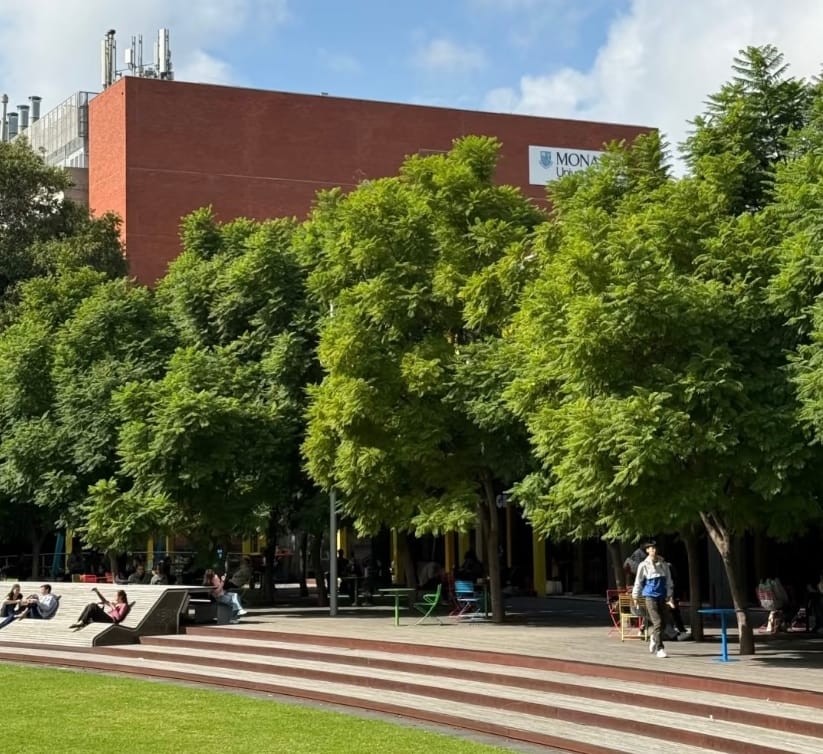Seeing green for better mental health
Nature may be an under-utilised health resource for uni students.

“I get anxious if I stay in the library too long, but as soon as I walk onto the central lawn, I feel immediately relaxed.”
These are the words of Cecilia Diao, a student at Monash University.
For her, green spaces are more than just scenery; they're a vital tool for emotional regulation and motivation.
In the fast-paced life of university students, nature may be an under-utilised mental health resource.
Green as a mental health tool
In recent years, green spaces have been recognised as “mental sanctuaries” amid urban life.
In high-pressure, fast-paced settings, they not only provide physical rest but also serve as natural buffers for emotional regulation.
The biophilia hypothesis in psychology suggests humans have an innate affinity for nature, a product of evolutionary adaptation.
Meanwhile, attention restoration theory proposes that natural settings help restore depleted attention resources after periods of high cognitive load. Brief exposure to greenery like a lawn, grove or garden can slow heart rates, reduce cortisol (a stress hormone) and improve mood significantly.
A 2024 study published in Frontiers in Psychology found that students who are surrounded by more greenery on campus tend to feel less anxious. The survey of over 6,000 students showed that the more green space they could see, the better their mental health.
Why does the colour green make us feel better?
While the ecological value of green spaces is widely recognised, their impact on psychological wellbeing is less often discussed.
According to a 2021 World Health Organisation report, natural environments play a broad and positive role in mental wellbeing. Green areas have been shown to reduce stress, enhance happiness and lower the risk of anxiety and depression.
The report also highlights that individuals living or studying in areas with more greenery tend to report fewer psychological distress symptoms. This correlation relates not only to the physical presence of nature but also to how we perceive the colour green itself.
Green, as a colour, holds unique psychological significance.
Studies in colour psychology suggest that green is commonly associated with nature, safety and balance — unlike red, which stimulates the nervous system, or blue, which induces calm.
Green’s medium wavelength is easier on the eyes and offers minimal visual strain. Therefore it frequently appears in learning and working environments.
Are campuses green enough?
In campus architecture and interior design, green elements are becoming increasingly prominent.
Fifty years ago, Monash’s Clayton campus was largely open paddocks. Today, it features 10 distinctive gardens filled with native trees and shrubs, an expansive and publicly accessible green space that offers students varied environments for both study and rest.
Despite the clear benefits, adding more green spaces to university campuses remains a challenge.
So, why aren't there more green spaces?
Jin Feng, a registered architect with the Australian Architects Accreditation Council, says it's about space availability.
“At campuses like Monash Caulfield or RMIT, which are located in urban centres, land for green space is limited,” Feng said.
“High building density and limited open areas restrict the potential for expansive lawns, so solutions rely on rooftop gardens, vertical plant walls, or small courtyards.”
Feng added that many older campus buildings weren’t designed with green space expansion in mind, making retrofitting costly and disruptive.
“Construction often requires lengthy approval processes and may interfere with regular academic activities, slowing down project timelines.”
Maintenance is also a key design concern.
“Ensuring long-term plant health means investing in irrigation systems, drainage, and dedicated personnel,” Feng said.
“In drought-prone Victoria, balancing water conservation with greenery is a constant challenge.”
Despite the ongoing challenges in integrating more green spaces, students at Monash University report that the existing greenery has a positive impact on their daily lives.
Students' share: finding calm in green spaces
Today, many Monash students consider these green spaces on campus essential for alleviating stress and enhancing focus during their studies.
Yajuan Wang, an undergraduate student majoring in psychology, goes to the central lawn almost every day to study or relax.
“The environment there makes me feel safe and calm, and it’s much less stressful than the library,” Wang said.
Especially during exam periods, this green space has become an important place for her to regulate her emotions.
Unlike Wang, who studies mainly at the Clayton campus with its abundant greenery, Diao studies at the more urbanised Caulfield campus, where green spaces are mainly concentrated in the open courtyards and passageways between the main teaching buildings.
Diao said she was surprised by the level of greenery when she first arrived on campus.
“I thought all Australian universities would have large green areas like Clayton, but the greenery at Caulfield is more decorative in nature,” she said.
She added that although there aren’t large expanses of grass, many plants are grown outside the windows of the teaching buildings, and when the weather is nice, many students study, rest, or eat on the central lawn.
Meanwhile, Monash student Chenxuan Li said she often observes the trees and sky on campus through the windows.
“I don’t usually study on the central lawn at Caulfield, but I deliberately choose seats near windows in classrooms or the library, because looking out at the scenery makes me feel more relaxed."





